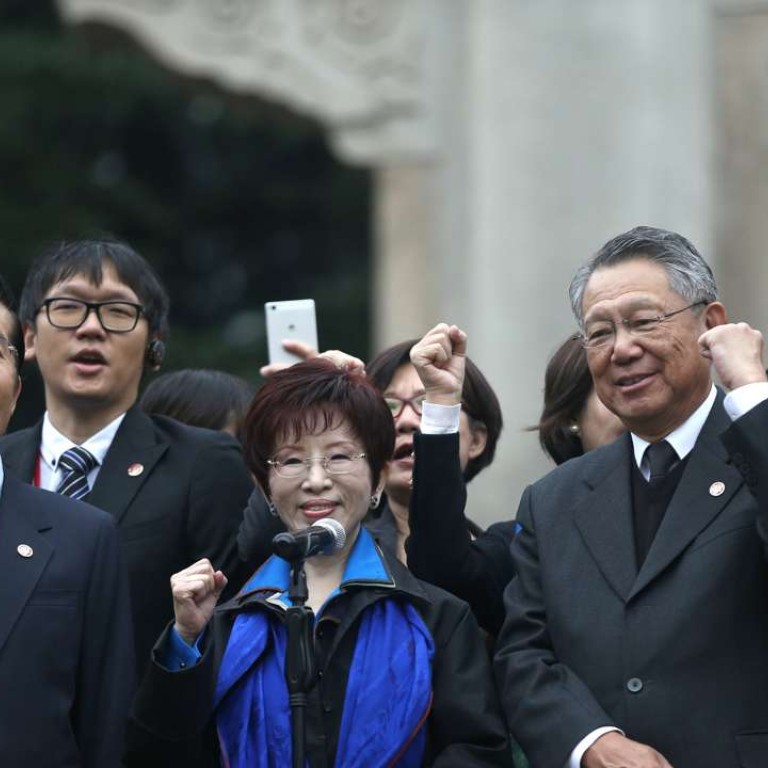
KMT chief plays both sides in visit to Nanjing
Chairwoman of opposition Taiwanese party tries to please hosts, and allay fears at home that she is too Beijing-friendly
Taiwan’s Kuomintang chairwoman, Hung Hsiu-chu, paid her respects to the founder of modern China, Dr Sun Yat-sen, at his mausoleum in Nanjing on Monday, in a widely watched speech designed to placate people on both sides of the Taiwan Strait.
In her first visit to Nanjing as the KMT leader, Hung managed to refer to Taiwan as the Republic of China, to calm her opponents on the island. She also appeased the mainland by calling for people on both sides of the strait to work for a “Chinese renaissance” – a phrase often used by mainland leaders to woo the Taiwanese.
Cheered on by a large crowd, Hung climbed more than 390 steps to Sun’s mausoleum.
Shouts like “KMT, go, go, go,” “Chairperson Hung, the 1.3 billion people in Taiwan and the mainland support you” and “Taiwan and the mainland are one family” were heard throughout an hour-long video clip posted on Hung’s Facebook page.
As an out-of-breath Hung reached the mausoleum, her aide read an oration honouring Sun. Hung later led the visiting delegation in presenting a wreath at the mausoleum, bowing before Sun’s statue and observing one minute of silence. “Dr Sun … eventually overthrew the Manchu dynasty to establish the Republic of China,” Hung said, uttering the words designed to placate her opponents in Taiwan.
The mausoleum ceremony was part of a five-day mainland visit in which she is scheduled to meet President Xi Jinping on Tuesday in his capacity as general secretary of the Communist Party.
That meeting has attracted grave concern among senior KMT officials and members who fear that Hung might say something to please Xi.
Taiwanese observers and some KMT officials have said the party could stand to lose future elections if Hung openly advocated a cause that most Taiwanese were not seen as ready for.
By openly mentioning the Republic of China – Taiwan’s official title – on the mainland, Hung was trying to calm the fears that is she is too sympathetic to Beijing, according to KMT observers.
Hung closed her statement by calling for the two sides to work togetherto create a prosperous future through a “renaissance of the [Chinese] race”.
Mainland leaders, including Xi, have repeatedly urged Taiwanese leaders to work with them to achieve a “Chinese renaissance”.
These calls form part of an appeal for a reunification of the mainland and Taiwan, after the 1949 end of the Chinese civil war, which saw defeated late KMT leader Chiang Kai-shek set up a rival government in Taiwan.
In a luncheon with Nanjing city Communist Party secretary Wu Zhenglong, Hung was quoted by Taiwan’s Central News Agency as saying that it was necessary for people on both sides of the strait to work together to create a “great future” for the “next generation of the Chinese race”.
Taiwan’s governing party, the independence-leaning Democratic Progressive Party, has warned Hung against signing any pacts during her mainland visit.

